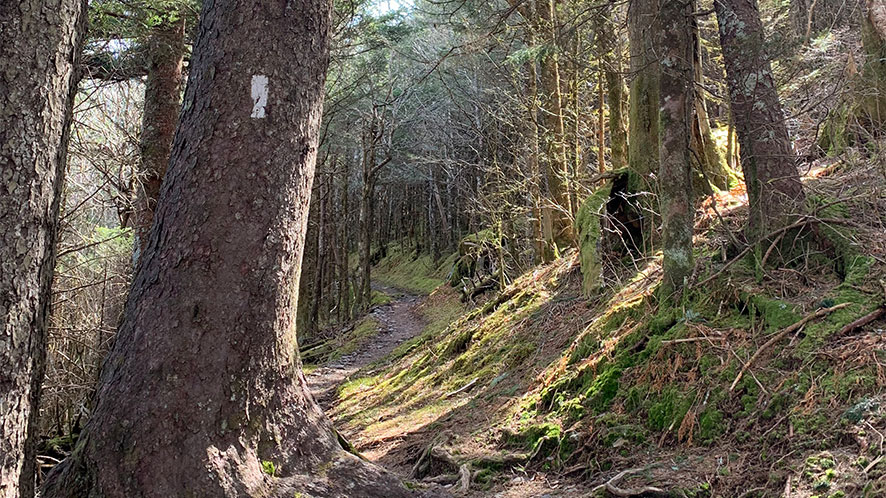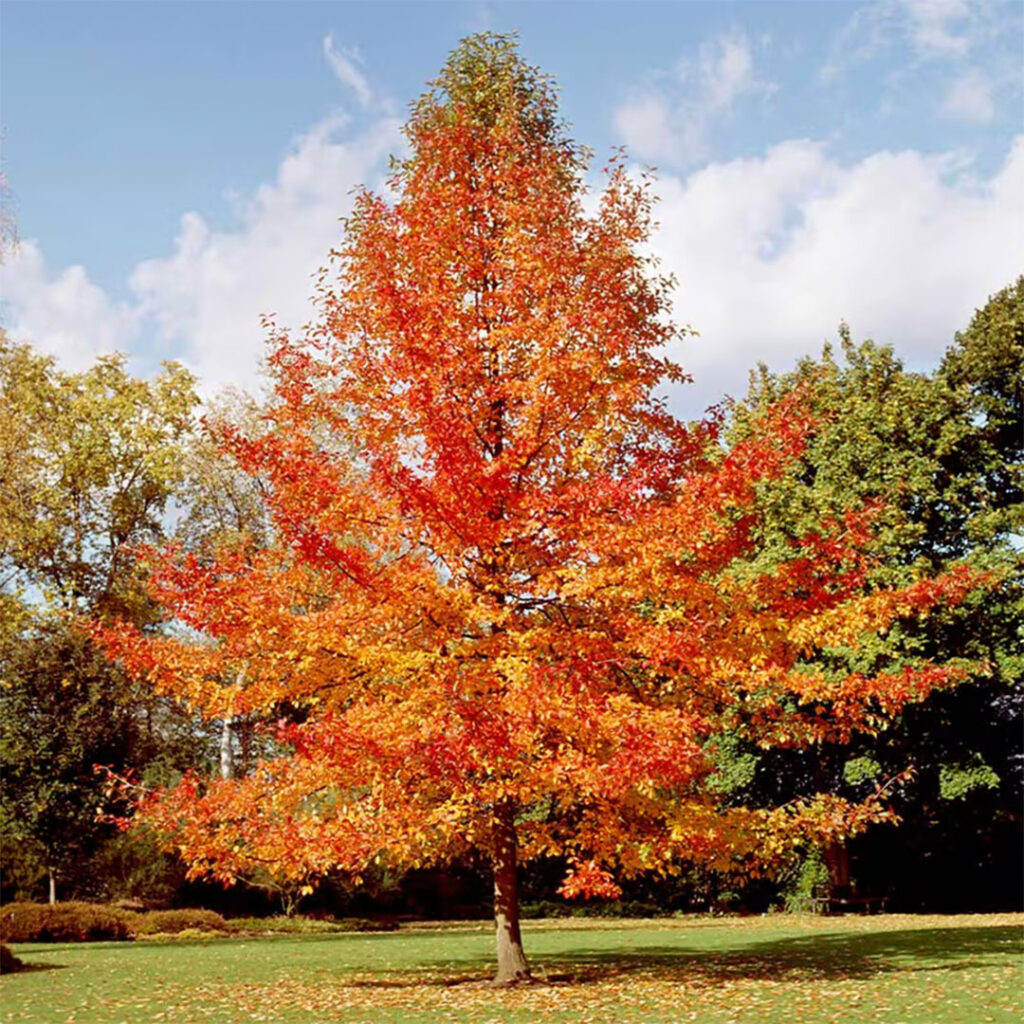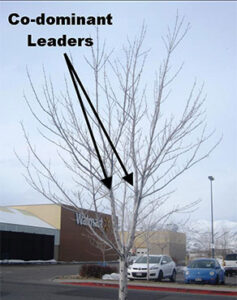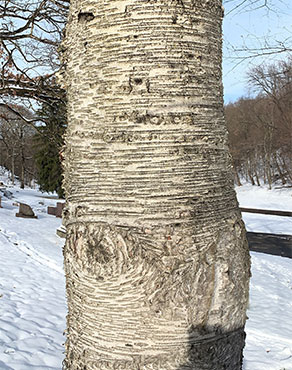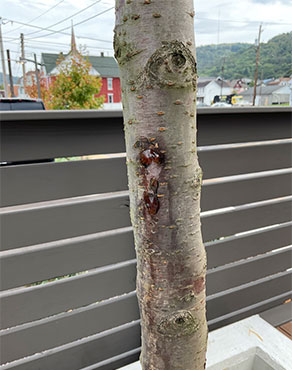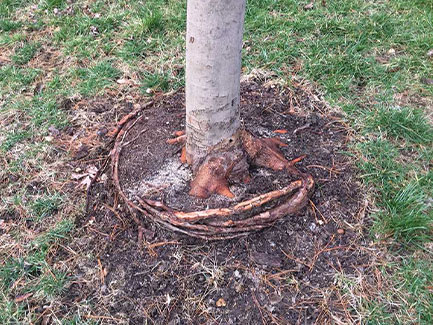Have you taken a good, deep breath outside recently? The air has lost the salty sharp scent of winter and carries instead the floral warmth of awakening spring. The murky mud of overwintered decomposing fallen leaves becomes an artful contrast to the emerging pops of green, and I’m reminded that my own lungs mirror the trees waving above my head.
Naked spiky trees begin to redress, silvery-celadon buds impossibly pushing out of what seemed like dead wood just a month ago. I’m a lover of nature first, a Landscape Architect second, but as I weave my way out of the woods and into the urban jungle, the emotional and logical are irrevocably intertwined.
A tree in a forest has friends to support it: large friends that tower decades taller, small friends that snack away at pests to preserve root systems, carbon-rich soil from fallen companions. These trees grow as they choose, in accordance with their ecosystem.
A tree in an urban context is brought in by humans, and so it needs the discernment and care of humans to give it its’ best life. The reasons established trees have been removed from cities and neighborhoods is, well, a whole other conversation, but as we bring trees back in, it’s important to be the friend trees need to thrive.
That’s where I come in as a Landscape Architect. Yes, we evaluate sites and work with natural processes to manage stormwater, but at my heart, I am a friend of the trees, and all plants that I mindfully select for each Planting Plan.
A typical street tree has a life expectancy of 19-28 years, rather than the 50-100 years of a “wild” tree, and, in my experience, has been closer to just 13 years. So, what does it take to be the kind of tree that can handle a life adjacent to sidewalks and bus stations, while also being attractive and providing the crucial shade needed to offset asphalt and concrete?
Consider the black tupelo, also known as Nyssa Sylvatica. This deciduous tree, native to North America, is in the dogwood family, and a favorite of mine. From the dark furrowed bark, whose wrinkles increase in beauty and depth as the tree ages, to the pyramidal formation of its healthiest state, this tree will stop you in your tracks near and far. Delicate pale green flowers elongate into glossy dark leaves in summer, providing shade worth a pause. The small fruits, avoidable by planting male trees if needed, are unobtrusive yet highly beneficial to local birds and bugs. The explosion of color in the fading last breaths of summer turning to fall is stunning, with sunset shades of yellow and orange and burgundy.
Let’s start in the middle, where the trunk meets the branches. The trunk should continue upward in one strong, single leader, rather than being split close to the base, which results in codominant leaders. While a young tree may look fuller with these codominant leaders, they’re ultimately a weak point, which, as the tree grows, will become a broken branch as the trunk can no longer support the lack of balance.
Next, the caliper of the trunk, also known as the diameter. Each caliper inch reflects the amount of time a tree will need to settle in the ground once transplanted. It’s a simple 1:1, so the standard 3” trunk will take 3 years to fully settle and will need attentive care until then. Too thick of a tree, and half of its life could be spent simply trying to establish, which slows the growth rate and overall efficacy of a street tree. It’s also more prone to disease and pests in this vulnerable time.
The bark of a black tupelo is like an alligator’s skin, with scaly gray-brown fissures. It should be firmly attached to the tree, without peeling or exposure of the trunk. Interestingly, while peeling would be a sign of illness in the black tupelo, it’s a sign of health in trees like the Paperbark Maple, which intentionally flakes in whimsical rust-colored curls.
Trees bear the scars of their experiences. Eyeball-shaped scarring on a trunk indicates a limb that was cut back, and bore holes and sap leakage are almost always signs of pests and therefore possibly an unhealthy tree.
As you look upward, the branches should, even at a young age, show signs of its eventual shape. The black tupelo is pyramidal, while trees like the Bradford Pear are rounder, like a slowly-blown bubble.
The branches should literally branch outward, without crossing their branchy fingers. Crossed branches at a young stage can result in friction and limb loss in a mature tree. These can be pruned back with care, but no more than 20% of a tree should be pruned at a time to reduce the risk of shock and stress on the tree.
And now, we float from the branches like a leaf, whirling our way down to the roots. If grown in a container, the roots may girdle or circle around themselves over time. This makes it difficult for a tree to establish itself safely in the ground as they continue this circuitous path, effectively strangling itself as it can’t reach further out to more nutrition.
When placed in the ground, the root flare, or the point where the roots establish from the trunk, is often covered by mulch or soil, but should in fact be exposed a few inches above the soil. If you just finished your spring mulching, go check your trees and brush those root flares free!
It’s important to remember that trees are highly resilient, even in a streetscape, and will strengthen through adversity if it does not have issues within its own system holding it back. A sick tree is a danger to itself and the public, prone to limb loss and pests. A healthy tree will provide shade, respite, and aesthetic for its full life cycle. As a friend of the trees, it’s the duty of a Landscape Architect to evaluate the options before they go in the ground, and bring out the best in nature as we bring out the best in public spaces.
At Strada, Elena is an award-winning Landscape Architect who creates big moments in complex urban spaces. In her free time, Elena can be found amongst the trees. She has conquered the Colorado and Appalachian trails and is ready for the next challenge.


